Production Process of the Kawajiri fude(Summarizes over 70 processes)
1. Selection of hairs
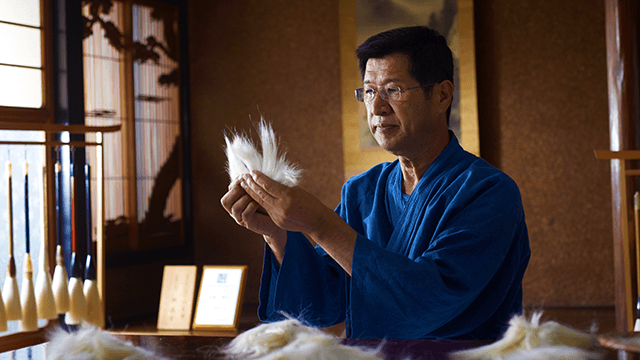
The hairs of a goat do not necessarily possess a uniform quality. There are always subtle differences among them in terms of glossiness, condition of the hair-tip, and their shapes.
The highest-quality hairs need to be sorted out from the more raw hair strands by discerning the subtlest differences among them.
To ensure a consistent quality, the selection work should always be conducted under the same conditions, on a sunny morning and facing south in order to attain a sufficient amount of natural light.
Only a discriminating pair of eyes and an ultra-sensitive touch can ensure a perfect selection. This, however, requires many years of experience and a finely-honed intuition.
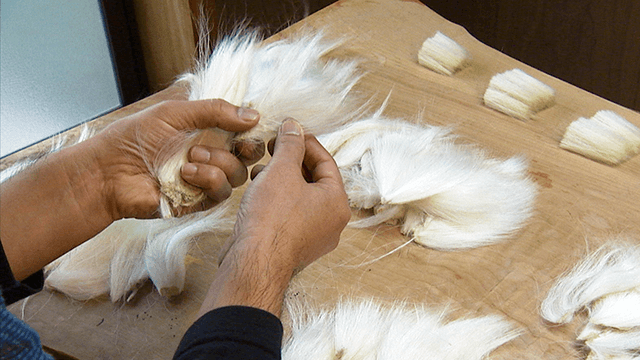
2. Kegumi (Classification of hairs)

Determine the character of a brush and its finished form. Classify the selected hairs into five groups according to their lengths derived by carefully examining their properties and calculating the amount to be used. This is the design process of brush making, through which the experience and keen, refined senses of a craftsperson will be ultimately tested. In this stage, hairs that are damaged, do not meet standards of quality, or are placed upside down are rejected. This process is done using a small knife-shaped tool called a hansasi.
3. Boiling

Wrap the hairs with linen cloth, bind with linen thread, soak into water.
Boil to straighten hairs and remove fat.

4. Watanuki (Remove fluff)

Dry the hairs thoroughly and remove the fluff on the root of the hairs with a steel comb.
5. Hinoshi (Melt oil & straighten hair)
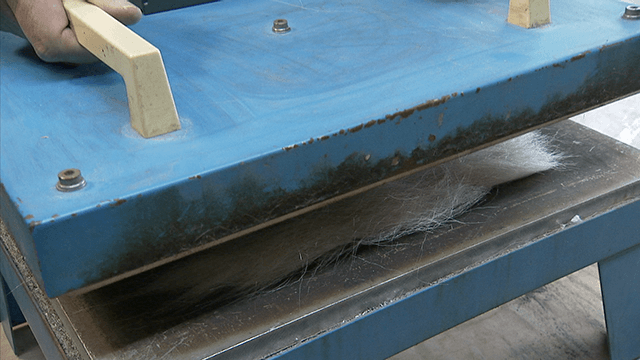
Next, baked rice husk ash is sprinkled onto the hair, then it is placed on a Hinoshi table.
The Hinoshi has two roles: first, like an iron; it straightens the hair, and second, it melts the oils with heat.

6. Haimomi (Remove the oil)

When the oil has melted, quickly wrap the hair in deerskin while it is still hot and carefully knead it to remove the oil.
7. Sakiyose (Align the tips of the hair)
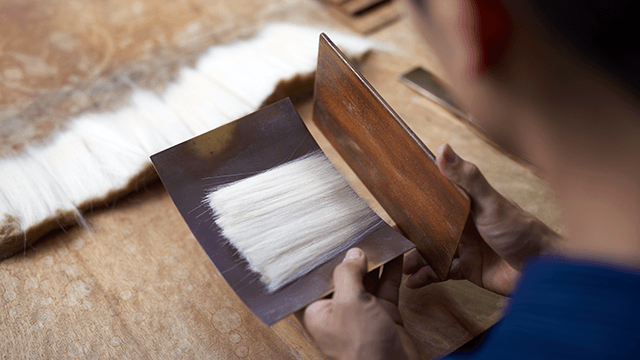
The tips of the hairs from each of the five sets are then aligned.
Unwanted hairs are removed, and the bunch is combed repeatedly.
Sakiyose is the process of tapping a metal plate with a piece of cherry wood to align the tips.
Highly refined skills are required to align the tips.
It is said that the skill level of an artisan can be known just from the tapping sound.
The process is repeated for further alignment.

8. Sunngiri (Cut the roots of the hair)

In the next process, move the aligned hair to square-shaped metal and align the tip again.
After that, place the first length of a piece of wood (Sungi) and cut off the root.
“Sungi” is a ruler in fude-making. This process is called Sunngiri.
The correct sized Sungi is chosen,the process for the other lengths is repeated the same way as the first set.
The elements for the core of a brush head from each hair set are now ready.
9. Sarae (Remove damaged hair)
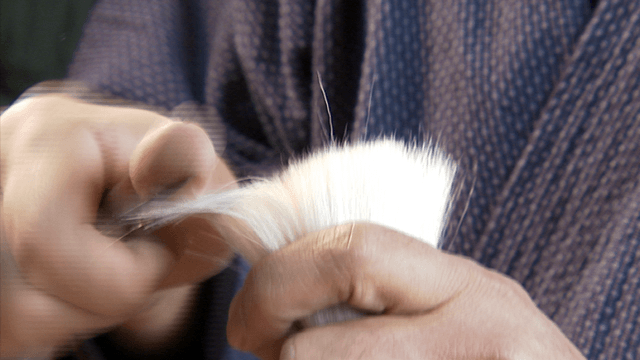
Remove any hair with a damaged tip using a bladeless small knife called the Hansashi.

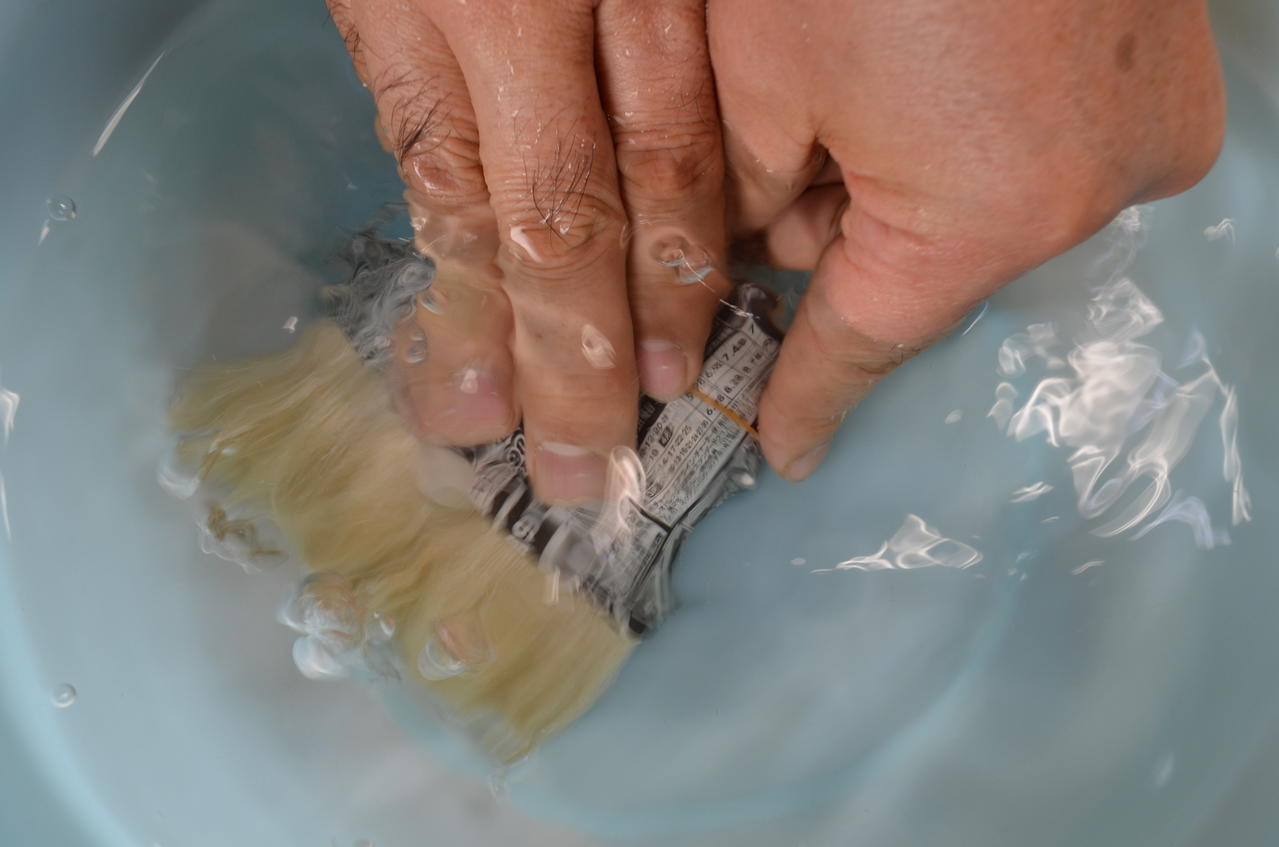
10. Kemaze (Mix hair)

Each of the five sets of hair are mixed in the process called Kemaze.
Each bundle is thoroughly soaked in water, then meticulously combed and refined.
This creates a flat shape called 'Hirame'.
11. Nerimaze (Mix hair)
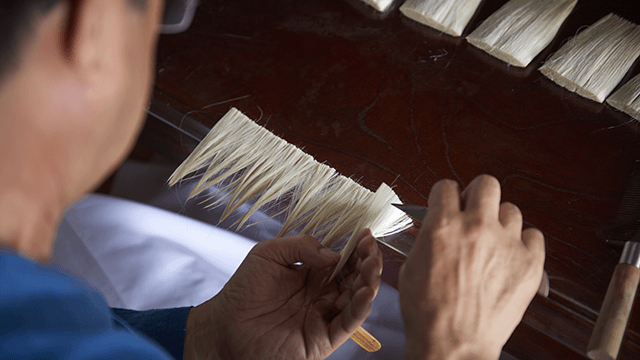
Choose the same portion of hairs from each Hirame, blend together, and make a new Hirame. Using water and Hansashi, mix repeatedly to make a perfect blend of five different hair sizes for durability and density.
Repeat this process dozens of times.

12. Sarae (Cull)

Superfluous hairs are rejected through meticulous handwork.
13. Shintate (Adjust)

Divide a Hirame into specific sizes, put each of them through Koma, adjust waistline, adjust shape, remove unwanted hair to make the core of brush.

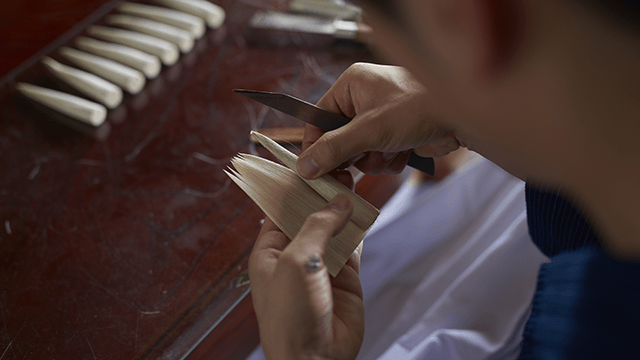
14. Uwagemaki (Wrap)

Wrap the outside of a dried core with a sheet of thin, shiny hairs.
15. Sarae (Cull)
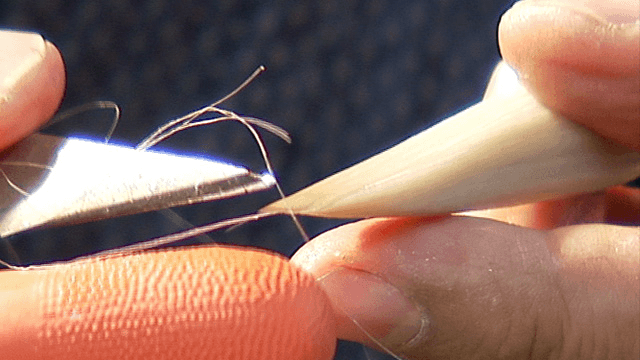
Superfluous hairs are rejected through meticulous handwork. The hair bunches are put back into shape, and then placed back onto the sieve.
Repetition of this steady work will ensure the finest finish.
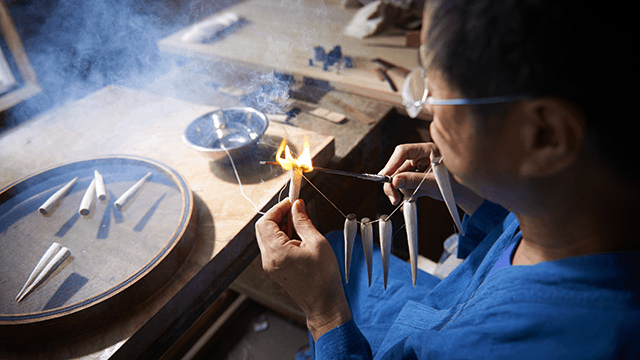
16. Yakijime (Burn)

Tie the root of a dried hair bundle with a linen thread and briefly burn the tail with heated iron.
17. Kurikomi (Shaft insertion)
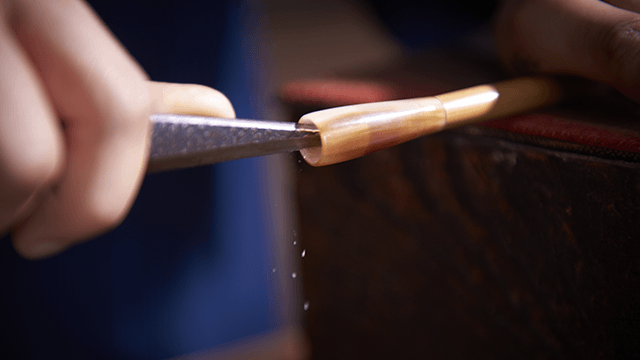
Prepare a shaft composed of Daruma, Bikotsu, string, brush tube and so on. Put a small knife inside the shaft, rotate the shaft, shave it according to the size of a hair bundle.
Apply adhesive to that part, and insert the hair bundle.

18. Norigatame

Depending on the type of brush, firmen the hair with Funori.
19. Complete
Yoshiyuki Hata
The Third Master
The First designated traditional craftsperson of Kawajiri fude (brush)
Date of birth: 3 February, 1951
Koso Hata
The Fourth Master
Date of birth: 11 September, 1987
